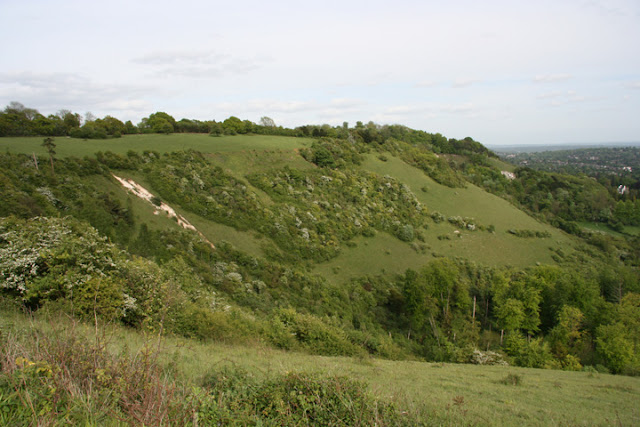Stirring under the snow

Colley Hill this morning, looking westwards towards where I would have been standing when I took the photograph shown in the previous post. Don't be fooled into thinking that there must be Mountain Hares, Ptarmigans and rare saxifrages nearby, because this is only at the heady height of 220m. Granted, a virtual mountain range for an East Anglian, but a poor excuse for upland to our more northern friends. It was quiet. Three individual Skylarks moving east was just about it as far as viz mig went, and the only surprise was flushing four Red-legged Partridges on the southern scarp. Most gratifying was the melting snow revealing the leaves of thousands of violets, plus some flowering Dog's Mercury. There was even enough warmth in the sun to unleash a few hardy flies.






